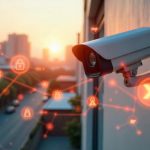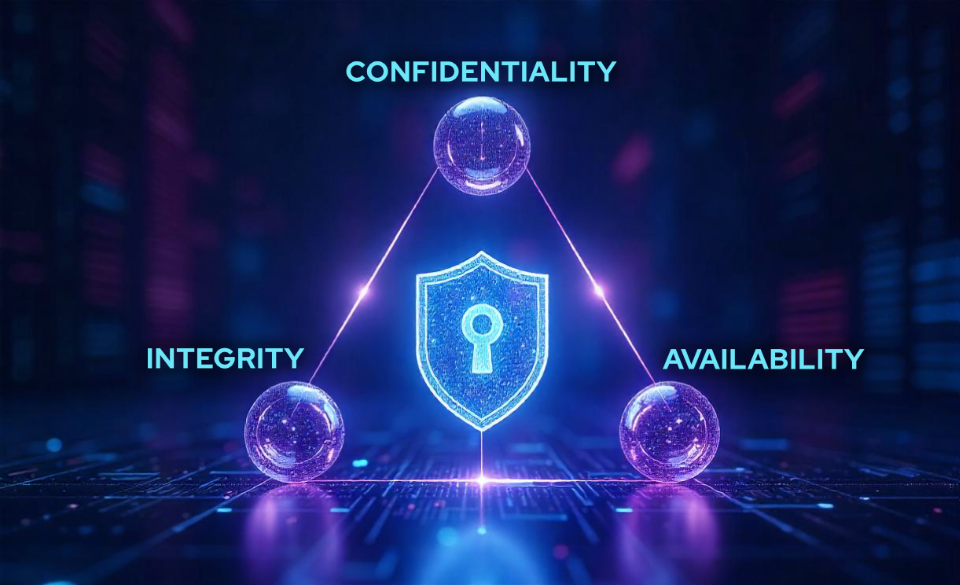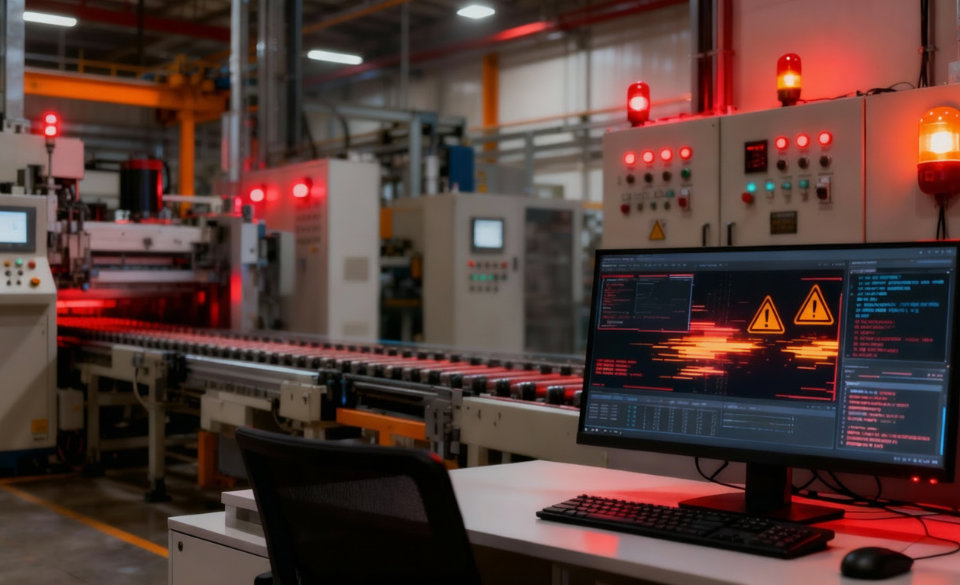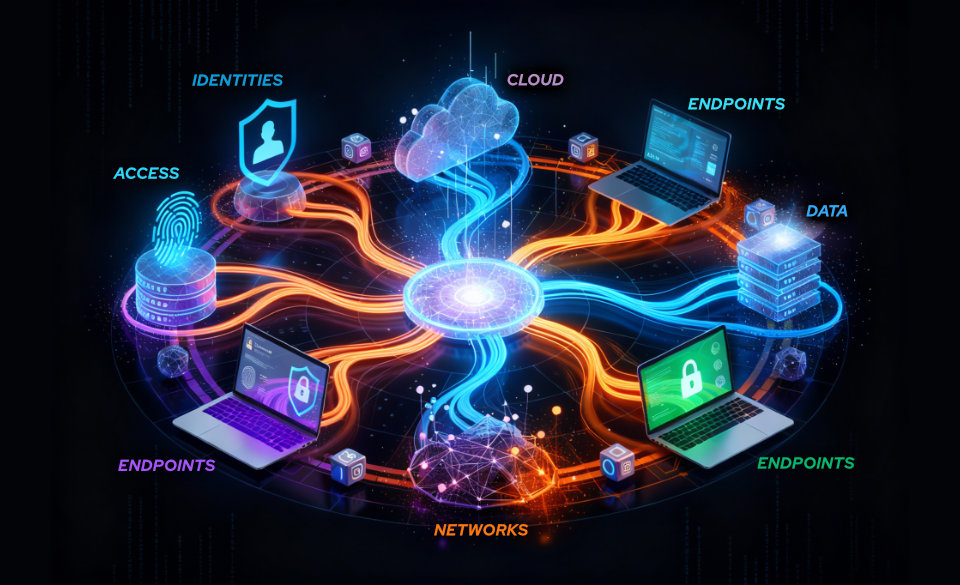
CCTV Network Security: How to Protect a Highly Vulnerable System
10 de July de 2025
Just-In-Time Access: Precision and Control Against Overexposure
24 de July de 2025In a world where most of a company’s critical processes are no longer signed with ink but with data, cybersecurity has ceased to be a “technical department” and has become a strategic function of any organization.
But… what exactly is cybersecurity? What is it for? And why do so many companies still underestimate it?
Cybersecurity
Cybersecurity is the set of technologies, processes, policies, and practices designed to protect systems, networks, devices, data, and digital services against malicious attacks, unauthorized access, alteration, or destruction.
In other words, it’s about ensuring the three fundamental pillars of information security:
- Confidentiality: Only those who are supposed to see the data can access it.
- Integrity: Data remains unaltered by accident or manipulation.
- Availability: Systems and information are accessible when needed.
This CIA principle (Confidentiality, Integrity, Availability) is the core around which every cybersecurity strategy revolves.
Why is it so important?
Because we no longer live in an analog world. Companies of all sizes rely on digital services: email, ERPs, CRMs, servers, remote connections, IoT devices, third-party platforms, and critical infrastructure systems.
And anything that connects… can be attacked.
The threat no longer comes from a teenager in a basement. Today we’re dealing with organized groups, professional cybercriminals, targeted attacks, industrial espionage, and even cyberwarfare.
According to multiple reports from ENISA and other European agencies, not only do cyberattacks on companies grow exponentially every year, but they are also becoming more sophisticated—targeting not just data exfiltration but the complete hijacking of operations (ransomware), manipulation of connected devices, or digital sabotage.
Most common types of threats:
- Malware: Malicious code like trojans, viruses, or worms.
- Ransomware: Hijacking of critical information in exchange for a financial ransom.
- Phishing: Identity spoofing to steal credentials.
- Denial-of-Service Attacks (DDoS): Overloading systems to knock them offline.
- Supply Chain Attacks: Compromising a supplier to infiltrate your system.
- Data Exfiltration: Silent theft of sensitive or confidential data.
The problem? Many companies don’t realize they’re under attack until it’s too late.
What does a good cybersecurity strategy depend on?
A solid cybersecurity strategy relies on three pillars:
- Technology
From firewalls, EDR systems, encryption, advanced threat detection tools (SIEM), to specific solutions like PAM (Privileged Access Management), virtual desktops (VDI), or secure local/remote work environments. Technology enables protection but does not guarantee security on its own. - Processes
Establishing clear policies on access, auditing, vulnerability management, updates, incident response, and change control is just as—if not more—important than having good technology in place. - People
The user remains the weakest link. Ongoing training, awareness, and a true cybersecurity culture within the company are key to preventing human errors that open the door to attackers.
How is an effective defense structured?
There is no one-size-fits-all solution. Modern defense requires a layered strategy, based on the Defense in Depth (DiD) model:
| Layer | Typical Solutions |
| Perimeter | Firewalls, IDS/IPS, network segmentation |
| Application | WAF, code analysis, Zero Trust |
| Identity | IAM, MFA, PAM |
| Data | DLP, encryption, DRM |
| Infrastructure | EDR, XDR, SIEM monitoring |
| Human Awareness | Training, simulations, incident response protocols |
In addition, the adoption of Zero Trust Network Access (ZTNA) models, secure cloud architectures, and the use of AI for anomaly detection are now essential in modern enterprise environments.
Cybersecurity and Regulation: The Legal Framework is Getting Tougher
Regulations are evolving and becoming stricter. The NIS2 Directive requires companies in essential and critical sectors to implement advanced technical controls, report major incidents within 24 hours, and protect their key systems with technologies such as PAM, VDI, end-to-end encryption, multi factor authentication, among others.
Non-compliance can lead to penalties of up to €10 million or 2% of the company’s total annual global turnover.
Proactive Cybersecurity: Advanced Detection and Response
The trend is clear: protection alone is not enough — anticipation is key. This is where EDR (Endpoint Detection and Response), XDR (Extended Detection and Response), and 24/7 Security Operations Centers (SOCs) come into play, all supported by artificial intelligence and machine learning.
Actual approach is to:
- Detect quickly.
- Respond even faster.
- Continuously learn from the attack.
The Role of the Human Factor
The weakest link remains the user. 85% of security incidents originate from some form of human error (Verizon DBIR 2024). Investing in awareness, continuous training, and realistic simulations is just as critical as any technological solution.
Industrial Cybersecurity and OT Systems
With the convergence of IT and OT, the risk multiplies. Sectors such as energy, telecommunications, water, healthcare, and transportation rely on critical infrastructures that were historically not designed to withstand cyberattacks.
The challenge here is to protect:
- • SCADA systems, PLCs, RTUs, and similar industrial components.
• Equipment operating with legacy and insecure protocols (e.g., Modbus, DNP3, Telnet, etc.).
• Physical elements configured and managed through digital environments.
Future of Cybersecurity
The coming years will be shaped by:
- • Offensive and defensive AI.
• Quantum cybersecurity.
• Security for edge computing.
• Protection of assets in 5G and industrial IoT environments.
• Widespread adoption of Zero Trust + PAM + VDI.
The key will be to automate detection and response, secure critical access with advanced solutions, and design resilient infrastructures from the ground up.
Cybersecurity is not a cost, it’s an investment
The question is not if you’ll be attacked, but when, and how prepared you are to withstand it. Investing in cybersecurity is about protecting your operations, your reputation, your data, your clients, and your future. It’s not just about avoiding penalties for non-compliance with regulations like NIS2 or GDPR—it’s about protecting the digital heart of your company.
In summary
Cybersecurity is not optional. It’s an operational and strategic necessity. The sooner you integrate it into the DNA of your company, the better prepared you’ll be to face a digital environment where threats are constant, invisible, and global.
At Cosmikal, we’ve spent over a decade helping companies shelter their access points, protect their critical assets, and stay operational even in the face of the most sophisticated attacks.
True cybersecurity starts by controlling what’s essential: access, work environments, and privileged identities. If you want to build a solid defense from the operational core of your company, Cosmikal knows how to make it happen.
Endurance, our shielded remote spacework solution, deploys quickly and easily without the need to modify existing infrastructure or disrupt production systems. It doesn’t require installing agents or interrupting services: it integrates non-intrusively, allowing full control from day one and providing visibility, traceability, and protection over every session, every access, and every critical action.




